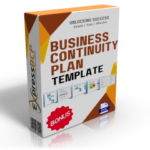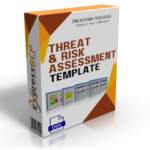In today’s fast-moving world, even a one-hour outage can cost businesses an average of $300,000. For larger enterprises, that number can hit the millions. But here’s the kicker: most disruptions come without warning. Whether it’s a cyberattack, supply chain failure, or extreme weather, every minute counts. Knowing which processes are critical to your survival isn’t just helpful—it’s essential. That’s where a Business Impact Analysis (BIA) steps in. Think of it as the playbook that tells you where a disruption will hurt the most—and how to recover quickly.
In this article, we’ll guide you through how to conduct a comprehensive Business Impact Analysis step-by-step. You’ll leave with actionable tips and a solid framework you can start using today. Whether you’re building your first BIA or refining an existing one, this guide will make sure nothing critical slips through the cracks. Let’s get to it!
1. Define the Scope of Your BIA
To avoid getting lost in the weeds, you need to define your scope clearly. Are you analyzing your entire organization or focusing on specific departments? For companies dipping their toes in for the first time, it might be smarter to start small—say, with a core business unit—before scaling up.
Actionable Tip: Break the scope into sections that align with your company’s structure. For example, analyze functions by location, department, or service line. This will make it easier to manage and prioritize findings.
2. Identify Critical Business Functions
Your next step is to figure out which functions are vital to your operation. These are the activities that must keep running, no matter what. For instance, if you’re a retail company, order fulfillment will likely be a top priority. In finance, payroll or client trading systems might top the list.
Actionable Tip: Gather input from department heads to make sure nothing gets missed. Use workshops or structured interviews to map out key processes—what they do, who manages them, and how often they’re performed.
3. Assess the Impact of Disruptions
Not all processes carry the same weight when disrupted. Your BIA should evaluate the financial, operational, and reputational damage caused by downtime. Consider both direct costs (like lost revenue) and indirect ones (like customer churn).
Actionable Tip: Assign impact levels such as “High,” “Medium,” or “Low” for each function based on the potential fallout. Be honest with your assessments; over-inflating impact will dilute the focus on genuinely critical processes.
4. Set Maximum Tolerable Downtime (MTD)
Every critical process has a breaking point—how long it can remain offline before the damage becomes irreversible. This is known as the Maximum Tolerable Downtime (MTD). If customer support can be down for 24 hours without major harm, that’s your MTD. If your payment processing system can’t survive more than an hour offline, that’s a different story.
Actionable Tip: Work with process owners to determine realistic MTDs. The goal isn’t just to survive a disruption—it’s to recover before the damage materially hits your bottom line or reputation.
5. Identify Dependencies and Interdependencies
Most business functions don’t operate in isolation. Your payroll system might depend on HR databases, which in turn depend on IT infrastructure. Mapping out these dependencies—and the ripple effects they can trigger—is crucial.
Actionable Tip: Use process mapping tools to visually link systems, departments, and third-party vendors. This makes it easier to spot where a disruption in one area could cascade into another.
6. Analyze the Data and Prioritize Recovery Efforts
Now that you’ve collected the data, it’s time to put it to use. Identify the processes that are both critical and have low tolerance for downtime. These should be your top recovery priorities.
Actionable Tip: Create a priority list and cross-reference it with your recovery plans. Make sure your recovery time objectives (RTOs) align with the impact and MTD assessments you’ve gathered.
7. Present the Findings to Leadership
All this effort will fall flat if the insights don’t reach the right people. A well-structured report that clearly communicates your findings is essential. Keep it concise but meaningful—highlight the high-risk areas and recommended actions.
Actionable Tip: Use visual aids like dashboards, heat maps, or graphs to make your findings digestible. Provide recommendations and a roadmap for action, ensuring the decision-makers understand the stakes and next steps.
8. Continuously Review and Update the BIA
A BIA isn’t a “set it and forget it” document. Business operations, technologies, and risks evolve constantly, meaning your BIA needs regular updates. Plan for annual reviews or schedule updates when significant changes occur, like mergers, new systems, or regulatory shifts.
Actionable Tip: Assign ownership of the BIA to a specific team or individual. Regularly engage with process owners and stakeholders to ensure the data stays fresh and relevant.
Wrapping It Up: The Foundation of a Resilient Organization
Conducting a comprehensive BIA takes effort, but it’s worth it. It’s your first line of defense when disruptions strike, guiding you on what to protect and how fast to recover. A solid BIA isn’t just paperwork—it’s the foundation for building a resilient organization. And resilience is no longer optional; it’s a business necessity.
Take the time to do it right. Your future self—and your customers—will thank you.







